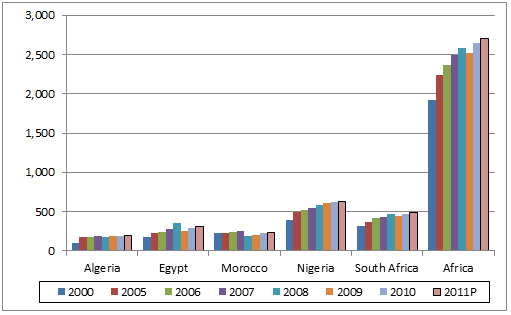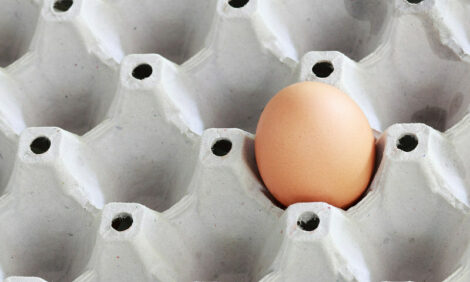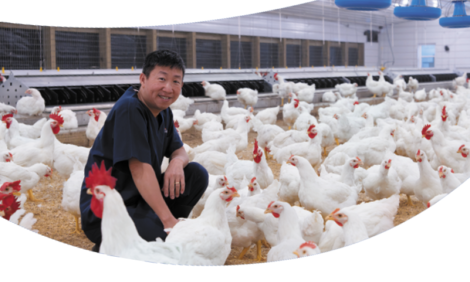



GLOBAL POULTRY TRENDS: Egg Output Growth Exceeds Global Average in Africa and Oceania
At 3.2 per cent and 3.0 per cent, respectively, for the years 2000 to 2011, the increases in average annual egg production for Africa and Oceania were above the global average of 2.2 per cent, according to the latest analysis for ThePoultrySite from seasoned industry watcher, Terry Evans.Africa
Egg production in Africa looks to be on target to reach three million tonnes per year in 2015. At first sight, it appears that the industry hardly expanded in 2011 (Tables 1 and 2) but this is because the total shown for the region of 2.65 million tonnes makes no allowance for production in the former Sudan, now divided into Sudan and South Sudan. If this had amounted to about 56,000 tonnes in that year, the provisional total for Africa would be around 2.7 million tonnes, showing a gain of some 60,000 tonnes or 2.3 per cent over 2010.
However, for some of the counties, the final 2011 data is still not yet be available, in which case, the FAO will have inserted the previous year's figure to enable them to come to an assessment of the regional total. Hence, some figures will be subject to revision later this year.
Over the period 2000 to 2008, Africa's egg industry grew by an average of almost four per cent a year. However, 2009 witnessed a dramatic cut-back in Egypt and to a lesser extent in South Africa, such that the regional total contracted by almost 67,000 tonnes or 2.6 per cent. The following year saw a sharp recovery of some 4.8 per cent to 2.65 million tonnes and by possibly a further 2.3 per cent in 2011 to give an estimate for that year of 2.71 million tonnes.
Between 2000 and 2011, it appears that Africa's egg industry has expanded by around 3.2 per cent a year compared with a global figure of some 2.2 per cent. Hence, Africa has managed to increase its share of world output from just below four per cent to a little above this figure (Table 1).
The combined output from the biggest five egg producing countries - Nigeria, South Africa, Egypt, Morocco and Algeria - of 1.86 million tonnes represents more than two-thirds of the regional total (Table 3).
Nigeria is the biggest producer, recording an average annual growth of more than four per cent as output rose from 400,000 tonnes to 636,000 tonnes between 2000 and 2011. However, as an indication of the great variation that can be found in production figures depending on the source, the Nigerian representative attending last year's annual conference of the International Egg Commission (IEC) claimed that egg output in 2011 was 1.25 million tonnes - double the quantity estimated by the FAO.
Almost all eggs are brown and more than 70 per cent of the commercial flock, put at 65 million, is housed in cages. It is generally considered that, if the government were to help the industry establish egg processing enterprises, this would not only lessen the impact of seasonal gluts on market prices but also provide great nutritional benefits through the development of a range of egg products. As this technology is expensive, it is unlikely that companies will be willing to make such an investment without financial backing from the government.
South Africa has the second largest industry. Here production dipped in 2009 as a result of the economic down-swing reducing egg demand, which depressed prices. However, following the cut-back in production, prices escalated 20 per cent year-on-year, giving good profits for producers and boosting output in 2010 and 2011. This again created a level of over-supply, putting severe pressure on prices. Nevertheless, over the 11 years, the industry achieved an annual growth rate of four per cent, with total production - commercial, rural and hatching eggs - reaching 490,000 tonnes.
According to this country's report to the IEC, the output from a commercial flock of some 24.2 million birds in 2011 exceeded 404,000 tonnes. Some 86 per cent of layers were in cages, the remainder being kept on free range. The split between brown and white egg layers was put at 30:70.
The IEC country report from the Southern African Poultry Association states: "The prevalence of a wide spectrum of diseases is a matter of real concern. Although the industry has improved its position in this respect, live bird movement, poor biosecurity and vaccination programmes not executed as per specifications, will continue to be a hazard to the industry." The flock was expected to peak at 25 million in June 2012.
Although the egg industry in Egypt has expanded by more than five per cent over the past decade or so, it is clear from, Table 2 that production failed to reach the 2008 peak in the succeeding years.
In Morocco, the fourth largest industry, output only surpassed the 2000 level in three of the following 11 years, while for 2011, the estimated figure of 230,000 tonnes was below that recorded in 2000.
In Algeria, as in many African countries, while the industry has expanded rapidly, the gains mainly occurred over the period 2000-2008, increases since then being much more moderate, reflecting the more difficult economic environment for producers in recent years.

Oceania
For Oceania, egg production expanded by some three per cent a year between 2000 and 2011. But, the increase in volume terms of some 78,000 tonnes can mainly be attributed to a gain of some 62,000 tonnes in Australia and of nearly 10,000 tonnes in New Zealand, these two countries accounting for 93 per cent of the regional total (Tables 4 and 5).
In most instances, the FAO's estimates of egg production are higher than those from other sources because the figures include assessments of both the commercial and backyard or village flocks, as well as the output of hatching eggs for both the layer and broiler sectors. However, as mentioned earlier, there are some instances, where the opposite is true.
Australia is an example as the Australian Egg Corporation Ltd (AECL) estimates commercial egg production in 2011 at nearly 287,000 tonnes - well above the FAO figure of 205,000 tonnes. The AECL puts the number of layers in 2011 at 16.5 million, of which 68 per cent were in cages, 25 per cent on free range and seven per cent in a barn system. Virtually all the birds lay brown eggs. The industry, like most, is susceptible to the global market for feed ingredients, hence feed prices in mid-2012 were higher than in the previous three years. This will have been reflected in the cost of egg production and eventually in market prices.
While the data on egg production in New Zealand released by the IEC, at around 65,000 tonnes in 2011, are again higher than that shown in the FAO stats, the trend is for relatively steady annual production. There are only 125 commercial egg producers, the largest 20 accounting for 75 per cent of total output in 2011. Some 83 per cent of birds are currently housed in conventional cages, 14 per cent on free-range and three per cent in barns.
Under a new animal welfare code, conventional cages are to be phased out by 2022 being - in the main - replaced by the larger colony cages. It is estimated that at least 45 per cent of the conventional cages will disappear by 2018 and some observers believe that all the old cages will be removed well before the 2022 deadline. This change is expected to cause major disruption to egg supplies, which will be reflected in both total and per person egg consumption in the next few years.
May 2013













